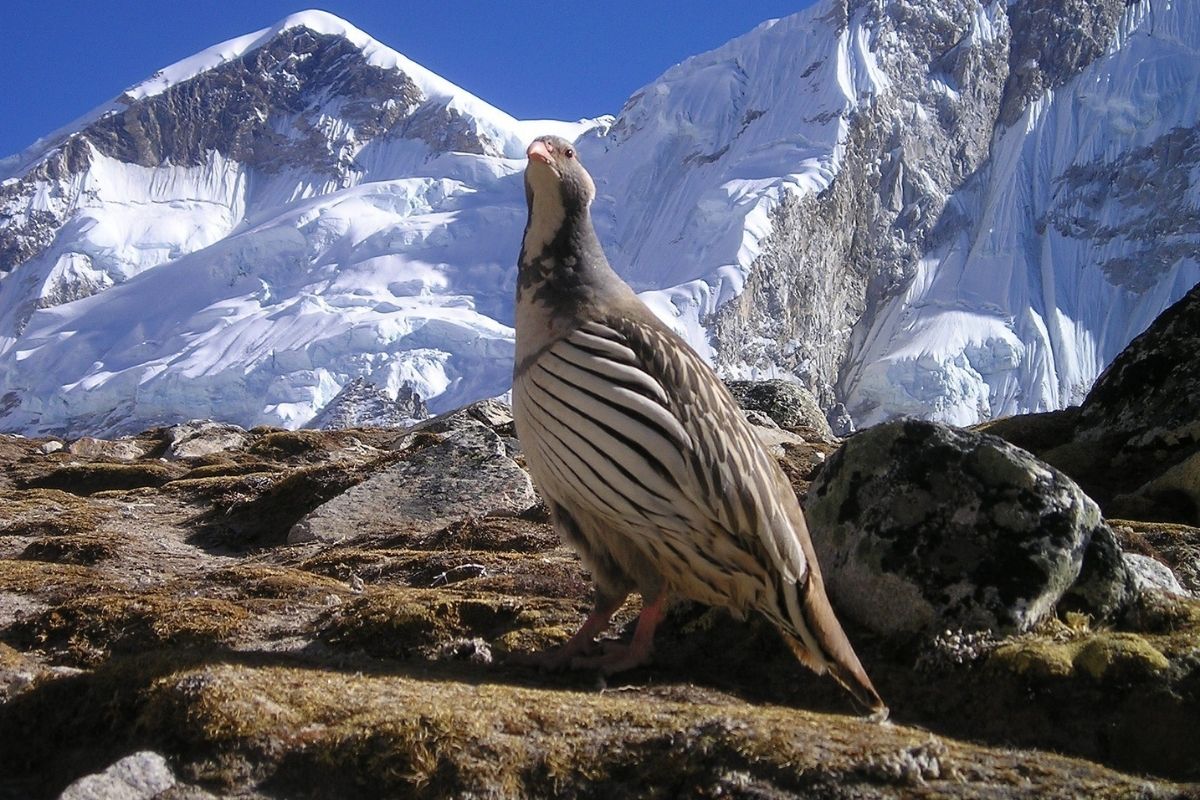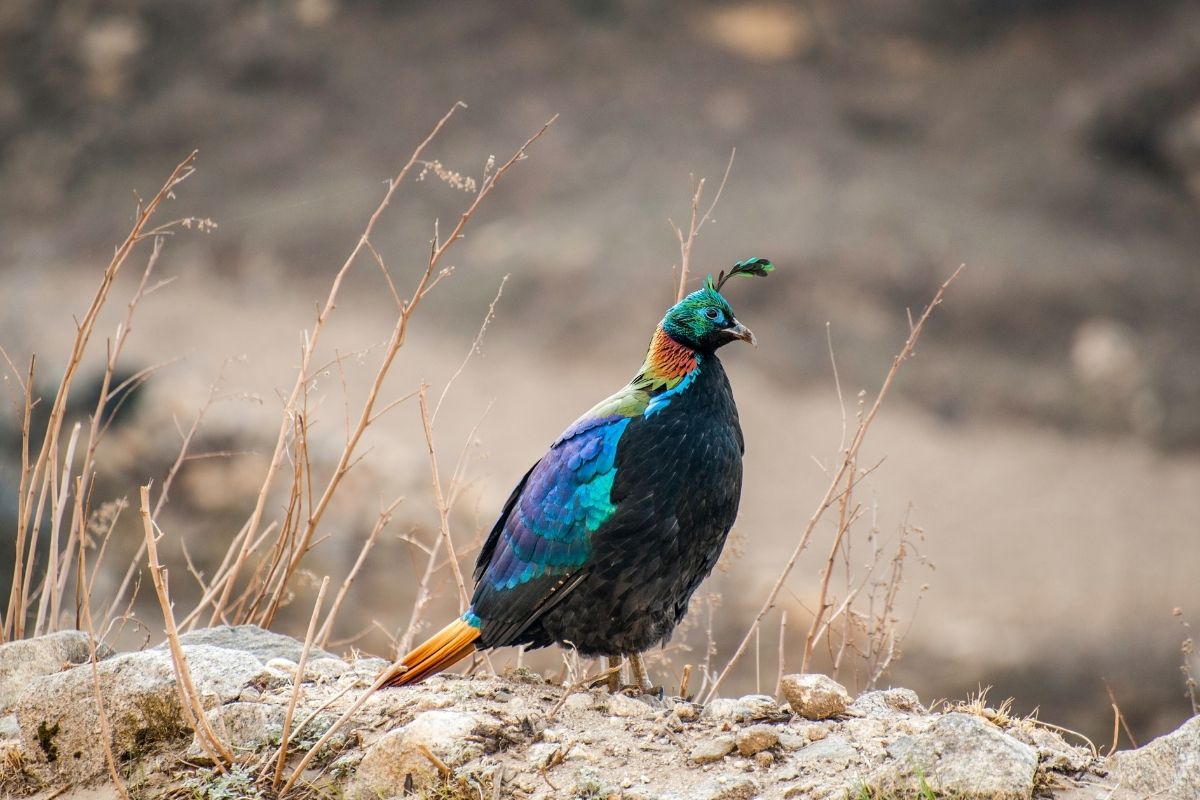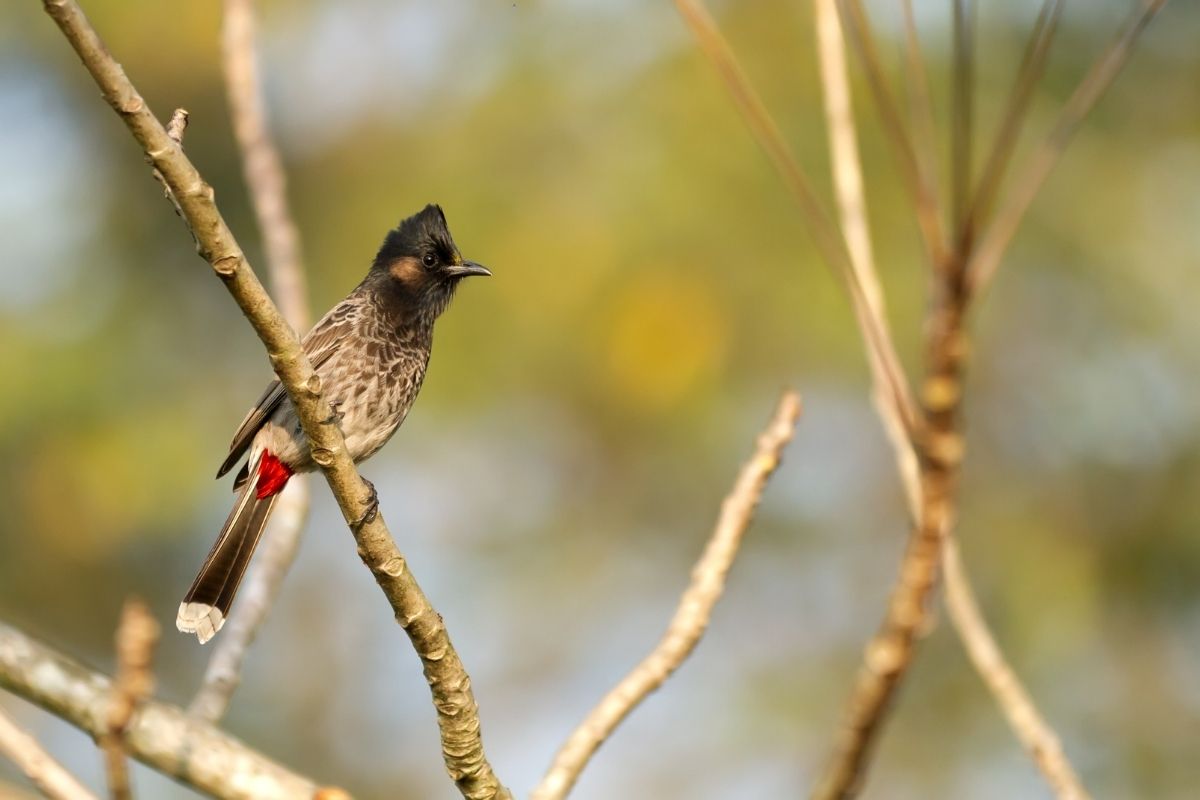
13 Reasons to Visit Nepal for Birdwatching

13 Reasons to Visit Nepal for Birdwatching
swotah travel
1944
17, 10 2023
Nepal, with its astounding diversity of around 915 bird species, stands as a dream destination for birdwatchers worldwide. Picture yourself wandering through Nepal's breathtaking landscapes, with the melodious chirps of birds serenading you and vibrant wings fluttering overhead. It's nothing short of magical. As we step into 2023, here are 13 compelling reasons why Nepal should be at the top of your birdwatching bucket list.

Photo: snowcock bird in Everest Region
1. A diverse range of birds
Nepal proudly sits at the 25th position globally and holds an impressive 11th rank in Asia for its bird diversity. With such an extensive variety of bird species, it's no wonder that Nepal is a top destination for birdwatchers. Simply put, if you're passionate about birds, Nepal offers a world of exploration unlike any other.
2. Easy and accessible destinations dedicated to birdwatching
Nepal is a haven for bird lovers, with many places to spot diverse species. While you can enjoy birdwatching throughout the country, certain spots are especially tailored for this activity. Some of the best destinations include:
-
Chitwan National Park: A renowned park offering special birdwatching services.
-
Koshi Tappu Wildlife Reserve: A place teeming with avian life and a must-visit for bird enthusiasts.
-
Annapurna Conservation Area: Not just famous for its mountains, but also a hotspot for bird lovers.
-
Bardiya: A lesser-known gem, great for spotting unique bird species.
These areas provide special amenities and experiences for those who love observing our feathered friends.

Photo: Himalaya Monal
3. Jagdishpur Lake
Nepal shelters Jagdishpur Lake also known as the bird’s heaven / Nepal’s birds paradise. Jagdishpur Lake located in the Kapilvastu district is easily the best place to see the most amount of migratory birds. 8000 plus birds migrate to this location every year from countries like China, Mongolia, Siberia, Kyrgyzstan, Turkmenistan, etc. Common coot, Cotton Pygmy-goose, Gadwall, Lesser Whistling duck, Tufted duck, Eurasian WigeonFerruginous duck, Northern pintail, Northern shoveler, and Common Pochard are some of the birds well known to migrate here during winter.
4. Shelters rare and endangered birds
As a result of global warming and habitat destruction many wild exotic birds have begun to extinct and become endangered so, for those explorers who want to know about these species birdwatching in Nepal is the best option. Some of the endangered bird species found in Nepal are Spiny Babbler (Kade Bhyakur), Impeyan Pheasant, Bengal Florican, etc.
Places where you can spot Spinny Babbler: Baitadi, Taplejung, Khaptad National Park, etc.
Places where you can spot Impeyan Pheasant: Makalu Barun, Langatng, Shey Phoksundo, Khaptad National Park, Rara National Park, Api Nampa Conservation, Gaurishankar, Kanchenjunga, etc.
Places where you can spot Bengal Florican: Chitwan National Park, Shukla Phanta Wildlife Reserve, Koshi Tappu Wildlife Reserve, Koshi Barrage, etc.
5. Diverse Habitat
Nepal has main three geographical regions namely: Himalayan, Hilly, and Terai. These three regions individually have a wide range of natural habitats like Wetlands, Alpine regions, grasslands, etc. Having a diverse habitat means exposure to other beauties of nature that go hand in hand with birdwatching.
6. Cultural exploration
While indulging in Birdwatching one gets close to traditional Nepali villages where you can explore their cultural practices and lifestyle to the fullest.

Photo: Bulbul bird
7. Less explored peaceful environment
Most of the Himalayan places in Nepal especially known for birdwatching are yet to be fully explored and they are not crowded. Therefore, Birdwatching is a peaceful experience that recharges you mentally and exposes you to the serene environmental beauty of Nepal.
8. Safe places with guides that have impeccable knowledge of the birds
Nepal is one of the safest places in the world to travel because of how hospitable, helpful, and warm people are. Similarly, the local guides have more information about the birds, their habitats, their characteristics, etc. than you can ever imagine which makes birdwatching alongside them full of new exciting information.
9. Photographic opportunities
Birdwatching is one of the best opportunities for all wildlife photographers out there. Imagine capturing the rarest birds in their natural habitat-surreal!
10. Scenic landscapes
Exploring the birds around you get to see the magnificence of Nepal’s landscapes. It has beautiful lush valleys, terrific mountain foothills, terraced farmlands, plain lands, etc.
11. Raise awareness
As the numbers of birds decrease with the passing year it is necessary to create awareness on how important protecting the birds that are getting extinct rapidly. Birdwatching provides you with necessary information on how their habitat should be maintained, how they should be fed, etc, which helps to keep their number intact and in the best-case scenario increase it therefore raising awareness.
12. Opportunity to explore stunning lakes
Wetlands are at the top of the list of places suitable for birdwatching mainly water birds. Wetlands of Nepal inhabit many astonishing lakes like Phewa Lake, Rara Lake, and Ghodaghodi Lake,

Photo: Plain Prinia Bird
13. Learn about Nepal’s bird conservation plans and be part of it
Nepal’s local as well as National governmental and non-governmental organizations actively participate in various activities to preserve the birds residing in Nepal. They work on protecting the ecosystem and welcome all enthusiasts from all across the globe to be part of it. Therefore, while on your birdwatching trip, you can be an active member of these organizations and make contributions from your end.
Some pieces of advice to make your bird watching easier:
-
Dress to camouflage: as birds are very sharp and might fly away on noticing people around hence, wear clothes that blend you up with the surroundings that way you get a better and longer view of the beautiful birdies.
-
Do all the necessary research: Browse the web thoroughly to gather as much information about Nepal’s habitat and birds as possible. Learn about the destination you are heading to and gather all the weather and accommodation information needed.
-
Be patient and stay quiet: to make sure birds do not sense any danger and run away you need to be patient and make very less to zero noise. Do not move around too much stay put in one place and just wait.
-
Have binoculars with you: If birds are a little far from you then it is not very wise to run towards them to get a better view. Cmon! We do not want to scare the birds away. So carry binoculars instead and get closer and a better view.
-
Choose the right guide: before choosing a guide check their authorized papers and certifications very very carefully. See their reviews on the internet if available. It is better to hire a local guide to the destination you are headed to as they have better knowledge of birds and the time and place to see the birds.
-
Follow the rules and regulations: if you are planning to visit National parks, Wildlife reserves, Conservation areas, etc. follow all the rules and regulations mentioned. Never try to feed birds anything. And most importantly don’t ever think about poaching or hunting or injuring them.
Fine ranging from one thousand rupees and ten thousand rupees or face imprisonment ranging from six months to two years or both if you kill a bird inside the national park, wildlife reserve, and conservation area.
List of birds that are commonly seen during bird watching, location, and their approximated number:
|
Name of the birds' |
Location |
Approximated number |
|
Spiny Babbler |
Kakani, Shivapuri Nagarjun National Park |
150 |
|
Impeyan Pheasant |
Langtang National Park, Annapurna Conservation Area |
1,500 |
|
Bengal Florican |
Chitwan National Park, Bardia National Park |
50 |
|
Great Hornbill |
Chitwan National Park |
40 |
|
Lesser Adjutant |
Chitwan National Park |
60 |
|
White-rumped vulture |
Chitwan National Park |
500 |
|
Sarus Crane |
Koshi Tappu Wildlife Reserve |
250 |
|
Black-necked Stork |
Koshi Tappu Wildlife Reserve |
80 |
|
Himalayan Monal |
Annapurna Conservation Area |
2000 |
|
Snow Partridge |
Annapurna Conservation Area |
500 |
|
Himalayan Griffon |
Annapurna Conservation Area |
1200 |
|
Himalayan Snowcock |
Manaslu Conservation Area |
200 |
|
Fire-tailed Myzornis |
Kanchenjunga Conservation Area |
500 |
Here is a list of birds that are rare and quite hard to spot (as of 2024 there is not enough data on their number):
-
Grey-sided Thrush
-
Black-breasted Thrush
-
Green Cochoa
-
Red-tailed Wheatear
-
Pied Wheatear
-
Northern Wheatear
-
Jerdon's Bush Chat
-
Common Rock Thrush
-
Daurian Redstart
-
Red-breasted Flycatcher
-
Kashmir Flycatcher
-
Siberian Blue Robin
-
Brown-breasted Flycatcher
-
Great Myna
-
Rosy Starling
-
Bohemian Waxwing
-
Long-billed Wren Babbler
-
Grey-headed Parrotbill
-
Eastern Orphean Warbler
-
Asian Stubtail
-
Slaty-bellied Tesia
-
Radde's Warbler
-
Tytler's Leaf Warbler
-
Northern House Martin
-
Blunt-winged Warbler
-
Oriental Reed Warbler
-
Black-browed Reed Warbler
-
Himalayan Bush Warbler
-
Baikal Bush Warbler
-
Grasshopper Warbler
-
Lanceolated Warbler
-
Rusty-rumped Warbler
-
Eurasian Sky Lark
-
Tibetan Lark
-
Indian Bush Lark
-
Singing Bush Lark
-
Rufous-tailed Lark
-
White-browed Tit
-
Chestnut Bunting
-
Rustic Bunting
-
Eurasian Reed Bunting
-
Pallas's Reed Bunting
-
Grey-necked Bunting
-
White-capped Bunting
-
Striated Bunting
-
Red-headed Bunting
-
Black-headed Bunting
-
Eurasian Siskin
-
Common Linnet
-
Three-banded Rosefinch
-
Grey-headed Bullfinch
-
Mongolian Finch
-
Green-headed Wagtail
-
Tawny Pipit
-
Forest Wagtail
-
Water Pipit
-
Spanish Sparrow
-
Finn's Weaver
-
Eurasian Jackdaw
-
Red-backed Shrike
-
Isabelline Shrike
-
Black-naped Oriole
-
Ashy Minivet
-
Swinhoe's Minivet
-
White-bellied Minivet
-
Silver-breasted Broadbill
-
Grey-headed Parakeet
-
Grey-headed Parakeet
-
Blue-eared Kingfisher
-
Northern Long-eared Owl
-
Mottled Wood Owl
-
Indian Vulture
-
Jerdon's Baza
-
Mew Gull
-
Lesser Black-backed Gull
-
Caspian Gull
-
Sooty Tern
-
Red-necked Phalarope
-
Terek Sandpiper
-
Black-tailed Godwit
-
Long-toed Stint
-
Sanderling
-
Greater Sand Plover
-
White-tailed Lapwing
-
Eurasian Oystercatcher
-
Grey Plover
-
Glossy Ibis
-
Indian Cormorant
-
Malaysian Night Heron
-
ChineGreater Flamingo
-
se Pond Heron
-
Greater Adjutant
-
Great White Pelican
-
Black-necked Crane
-
Red-throated Diver
-
Slaty-legged Crake
-
Western Water Rail
-
Slaty-breasted Rail
-
Spotted Crake
-
Whistling Hawk Cuckoo
-
Plaintive Cuckoo
-
Tibetan Sandgrouse
-
Sykes's Nightjar
-
Wood Pigeon
-
Rain Quail
-
Jungle Bush Quail
-
Baikal Teal
-
Chinese Spot-billed Duck
-
Mandarin Duck
-
Fulvous Whistling Duck
-
Tundra Swan
-
Whooper Swan
-
Bean Goose
-
Greater White-fronted Goose
-
Long-tailed Duck
-
Smew
-
Red-breasted Merganser
-
Baer's Pochard
-
Greater Scaup
-
Pink-headed Duck
-
Baikal Teal
-
Chinese Spot-billed Duck.
NEWSLETTER SIGNUP
Sign up to receive our trip ideas and travel offers!
Get updates and Exclusive Offers up to 20% Discount








